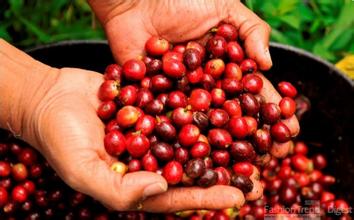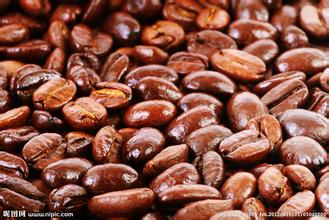Caffeine content of Liberian species-caffeine content of all kinds of coffee
Caffeine content of Liberian species-caffeine content of all kinds of coffee
Liberian species, scientific name Coffealiberica), West Africa is the origin of Liberian coffee, no matter high or low temperature, humid or dry and other environments, all have strong adaptability, but not resistant to leaf rust, flavor is worse than Arabica robusta species, scientific name coffee RobustaLinden, leaf rust resistant varieties found in Congo, Africa, have stronger resistance than Arabica species. In fact, it was a mutant of the Congo species (scientific name Coffeacanephora). The name of the Robusta species has become popular, and it is regarded as the same species as the Congolese species. This has a unique aroma (called "Luobu smell", which some people think is moldy) and bitter, and is generally used in industrial coffee, such as instant coffee, bottled coffee, liquid coffee, or in a small amount in blended coffee. Caffeine is about 3.2%.
Coffea liberica does not want to go into great detail here, because his trading scope is very small, usually not used, what we are talking about is not very often, so let's briefly describe it here. The origin of Liberian coffee is in West Africa, and it has strong adaptability to all kinds of environments, such as high and low temperature, damp or dry, except that it is not resistant to leaf rust, and Arabica species are not resistant to leaf rust. However, the flavor of Liberian species is worse than that of Arabica species, and the bitterness is extremely severe, so it is only traded on the domestic market in some West African countries, or planted for research. Bean-shaped spoon-shaped, large, 10m high, cultivated at a height of less than 200m, highly resistant to rot. The coffea robusta Linden was originally a mutant of the coffea canephora, but it is customary to compare the robusta to the Arabica rather than the Congolese. Robusta bean type is relatively round, sour is not obvious, but has a unique bitter taste, the flavor is similar to fried wheat, is known as "Luobu flavor". The flavor is very strong, mainly used in instant coffee, bottled coffee, liquid coffee and other industrial production of coffee. But the caffeine content of Robusta is about 3.2%, which is much higher than 1.5% of Arabica. The height of the tree is about 5m, the cultivation height is less than 500m, it has strong rot resistance, high temperature and rain tolerance, and has stronger resistance to leaf rust than Arabica. The main producers of Robusta species are Indonesia, Vietnam and West African countries with C ô te d'Ivoire, Algeria and Angola as the center. In recent years, Vietnam is more committed to becoming one of the major coffee producers and including coffee production in its national policy. Hey, this is one of the answers to Mr. Eric's question about why Vietnamese coffee can be sold for 0.5 yuan a cup. First, quality; second, culture; third, quantity. But Vietnam also produces some Arabica coffee.

Important Notice :
前街咖啡 FrontStreet Coffee has moved to new addredd:
FrontStreet Coffee Address: 315,Donghua East Road,GuangZhou
Tel:020 38364473
- Prev

Italian coffee machine brewing head structure-coffee machine brewing head apron replacement
Italian coffee machine brewing head structure-coffee machine brewing head apron replacement is different from ordinary brewing head. E61 is connected to the boiler (or heat exchanger) with two water pipes, the upper one is called the inlet, and the lower one is called the backwater outlet. The hot water in the boiler enters the cavity 1 from the inlet, and the flushing head is heated. After exchanging heat, the temperature of the hot water decreases, and the density of the cooled hot water increases.
- Next

What is the standard of Italian coffee powder?
Italian coffee how much coffee powder thickness Although this golden rule in recent years in the professional coffee forum still has some controversy, but 9bar pressure basically no controversy, so a treasure on a pile of bragging 15bar or even higher coffee machine, in fact refers to the coffee machine's highest pressure, itself meaning little, generally used to fool new people, stable pressure and stable temperature
Related
- What brand of black coffee is the most authentic and delicious? what are the characteristics of the flavor of the authentic Rose Summer Black Coffee?
- Introduction to the principle and characteristics of the correct use of mocha pot A detailed course of mocha pot brewing coffee is described in five steps.
- Which is better, decaf or regular coffee? how is decaf made?
- How much is a bag of four cat coffee?
- How about four Cat Coffee or Nestle Coffee? why is it a cheap scam?
- Which is better, Yunnan four Cats Coffee or Nestle Coffee? How about cat coffee? is it a fake scam? why is it so cheap?
- How about Cat Coffee? what grade is a hoax? which instant coffee tastes better, four Cat Coffee, Nestle Coffee or G7 coffee?
- Process flow chart of coffee making-Starbucks coffee making process what coffee tastes good at Starbucks
- The top ten best coffee beans in the world Rose summer coffee or Tanzanian coffee tastes good
- Yunnan four cat coffee is good to drink?_four cat coffee is a big brand? four cat blue mountain coffee is fake?

